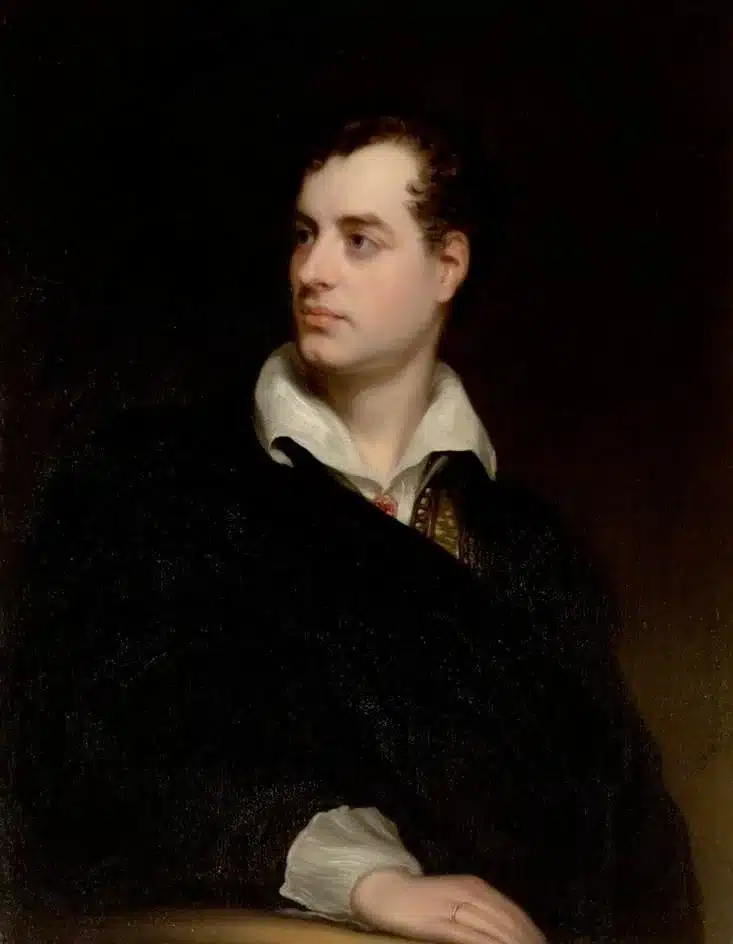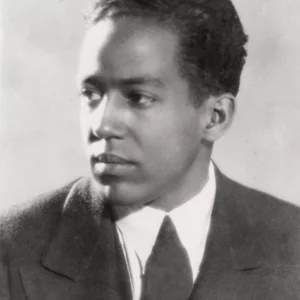George Gordon Byron, known as Lord Byron, was born on January 22, 1788, in London, England. A leading figure of the Romantic movement, Byron was a poet of remarkable talent, whose works continue to captivate readers with their passion, beauty, and complexity. Renowned for his tempestuous personal life and flamboyant personality, Byron’s legacy is marked by both his literary genius and the scandals that surrounded him. This article delves into his life, work, and enduring impact on literature.
Early Life and Education
Birth and Family Background
George Gordon Byron was born into an aristocratic family with a troubled history. His father, Captain John “Mad Jack” Byron, was notorious for his reckless behavior and dissipated lifestyle, while his mother, Catherine Gordon, hailed from a wealthy Scottish family. Byron’s father squandered much of his wife’s fortune, leaving her in financial difficulties. After his father’s death, Byron’s upbringing was primarily overseen by his mother, whose volatile temperament had a lasting effect on him.
Education and Early Influences
Byron was born with a clubfoot, a physical disability that caused him considerable pain and affected his self-esteem throughout his life. Despite this challenge, he showed early signs of intellectual brilliance and a talent for poetry. He attended several schools, including Harrow School, where he began to develop his literary skills and formed lasting friendships. In 1805, Byron entered Trinity College, Cambridge, where he immersed himself in the study of literature and history, while also indulging in the hedonistic pursuits that would later define his reputation.
Literary Career
Early Works and “Hours of Idleness”
Byron’s first collection of poetry, “Hours of Idleness,” was published in 1807 when he was just 19 years old. The collection received harsh criticism from the influential Edinburgh Review, prompting Byron to respond with a satirical poem titled “English Bards and Scotch Reviewers.” This bold and defiant work established Byron’s reputation as a formidable and fearless poet.
Childe Harold’s Pilgrimage
In 1809, Byron embarked on a grand tour of Europe, a journey that greatly influenced his writing. The result was “Childe Harold’s Pilgrimage,” a lengthy narrative poem published in 1812. The poem, which follows the travels and reflections of a disillusioned young man, struck a chord with readers and propelled Byron to fame. The character of Childe Harold, often seen as a reflection of Byron himself, became an iconic figure of the Romantic era, embodying the ideals of individualism and introspection.
Major Works
Byron’s literary output during his lifetime was prolific and varied, encompassing poetry, plays, and prose. Some of his most notable works include:
Don Juan: A satirical epic poem that follows the adventures of its titular hero. Known for its wit, humor, and biting social commentary, “Don Juan” is considered one of Byron’s masterpieces.
Manfred: A dramatic poem that explores themes of guilt, redemption, and the supernatural. The protagonist, Manfred, is a brooding and tormented figure, often compared to Byron himself.
The Giaour: A narrative poem set in the Ottoman Empire, exploring themes of love, revenge, and fate.
The Bride of Abydos: Another narrative poem with an exotic setting, focusing on forbidden love and familial conflict.
Scandal and Personal Life
Romantic Entanglements
Byron’s personal life was as tumultuous and dramatic as his poetry. He was known for his numerous romantic liaisons and affairs, both heterosexual and homosexual, which scandalized society and fueled his notorious reputation. His most infamous relationship was with his half-sister, Augusta Leigh, which led to widespread rumors and condemnation. Byron’s passionate and often destructive relationships provided rich material for his writing, but they also contributed to his social ostracism.
Marriage and Separation
In 1815, Byron married Annabella Milbanke, a highly intelligent and wealthy woman. The marriage was short-lived and fraught with tension, largely due to Byron’s erratic behavior and infidelities. Annabella left Byron after a year, taking their daughter, Ada Lovelace, with her. The separation and ensuing scandal further tarnished Byron’s reputation, and he chose to leave England in 1816, never to return.
Exile and Later Years
Life Abroad
Byron spent the remainder of his life in self-imposed exile, traveling across Europe and settling in various locations, including Switzerland, Italy, and Greece. During this period, he continued to write prolifically and maintained his connections with other prominent writers, including Percy Bysshe Shelley and Mary Shelley. His life abroad was marked by continued scandal and adventure, as he engaged in various romantic entanglements and political intrigues.
Involvement in the Greek War of Independence
Byron’s final years were defined by his passionate support for the Greek War of Independence against the Ottoman Empire. He traveled to Greece in 1823, where he provided financial assistance and military support to the Greek cause. His dedication to the struggle for Greek independence endeared him to the Greek people and solidified his legacy as a champion of freedom and justice.
Death and Legacy
Death in Greece
On April 19, 1824, Byron died of a fever in Missolonghi, Greece, at the age of 36. His death was mourned both in Greece, where he was hailed as a national hero, and in England, where his literary contributions were widely recognized. Byron’s body was returned to England, but his request to be buried in Westminster Abbey was denied due to his scandalous reputation. Instead, he was interred in the family vault at St. Mary Magdalene Church in Hucknall, Nottinghamshire.
Literary Influence
Byron’s influence on literature and the Romantic movement is immense. His works, characterized by their emotional intensity, lyrical beauty, and exploration of complex psychological and social themes, have inspired countless writers and poets. The Byronic hero, a type of character defined by brooding introspection, rebelliousness, and a disdain for societal norms, has become a staple of literature and popular culture.
Enduring Legacy
Despite the scandals and controversies that surrounded his life, Byron’s literary genius and contributions to the Romantic movement have ensured his lasting legacy. His poetry continues to be studied, celebrated, and admired for its artistry and insight into the human condition. Byron’s life and works remain a testament to the power of creativity and the enduring impact of art.
Conclusion
Lord Byron’s life and work are a fascinating blend of genius and scandal. As a central figure of the Romantic movement, he captivated readers with his passionate and introspective poetry, while his tumultuous personal life added to his allure and notoriety. Despite the controversies that marred his reputation, Byron’s literary contributions have left an indelible mark on the world of literature, cementing his status as one of history’s greatest poets.


